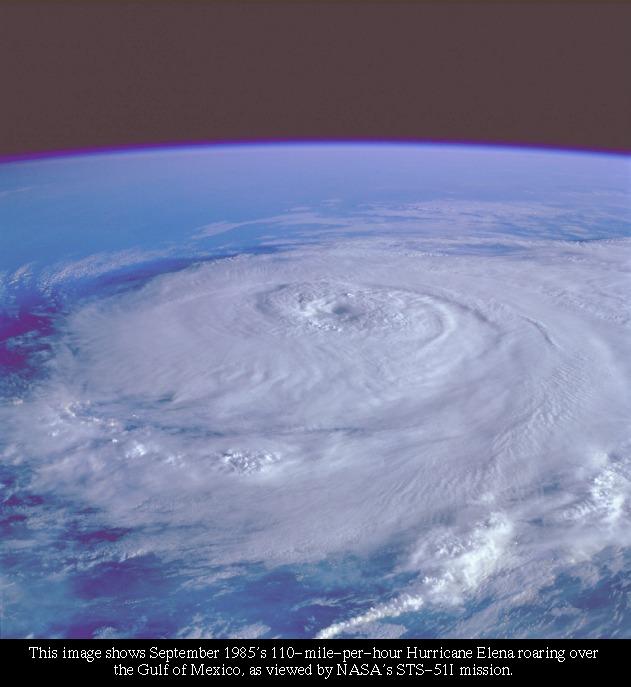The Coriolis Effect
 The Earth, rotating at about 1000 miles per hour (1,609 km/hr), influences the flow of air and water on its surface. We call this the Coriolis Effect, named after French scientist Gaspard Coriolis, who made this discovery in the 19th century. As the Earth turns to the east, it causes air and water to swirl counterclockwise in the Northern hemisphere. In the Southern hemisphere, the swirl is clockwise. You can see this very easily in space photographs of tropical storms and hurricanes.
The Earth, rotating at about 1000 miles per hour (1,609 km/hr), influences the flow of air and water on its surface. We call this the Coriolis Effect, named after French scientist Gaspard Coriolis, who made this discovery in the 19th century. As the Earth turns to the east, it causes air and water to swirl counterclockwise in the Northern hemisphere. In the Southern hemisphere, the swirl is clockwise. You can see this very easily in space photographs of tropical storms and hurricanes.
But don't look for the Coriolis Effect in your sink. On a small scale, and that includes even something as large as a tornado, many other factors come into play, such as the shape of a basin, the turn and water pressure of a faucet, and the rotation rate of the air or water. And no, water doesn't go straight down the drain on the equator. Although this is widely reported, it is wrong.
About the Author
Gene Mascoli, JD
 Gene Mascoli is a founder and publisher of ScienceIQ.com. He holds a J.D. degree from the University of Santa Clara and a B.A. in English. In 1997 Gene launched ScienceMaster.com, an online science education portal where he brought together his love of writing with his interest in the sciences. Gene collaborated with David Gamon on the popular digital book
“The Internet Guide to NASA on the Net” and has also produced two popular science CD-ROMs on astronomy and space science.
Gene Mascoli is a founder and publisher of ScienceIQ.com. He holds a J.D. degree from the University of Santa Clara and a B.A. in English. In 1997 Gene launched ScienceMaster.com, an online science education portal where he brought together his love of writing with his interest in the sciences. Gene collaborated with David Gamon on the popular digital book
“The Internet Guide to NASA on the Net” and has also produced two popular science CD-ROMs on astronomy and space science.


